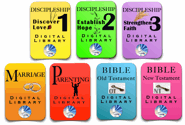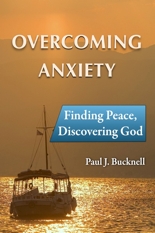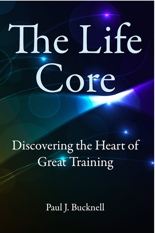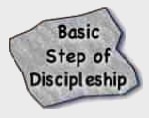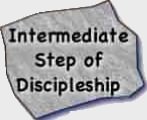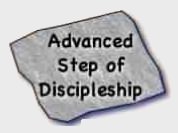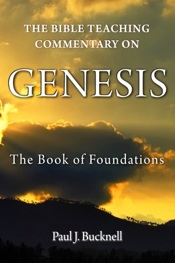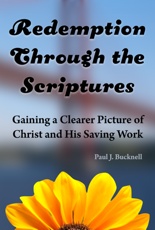
The Reliability of the Bible Texts
Doesn't the Bible have a lot of mistakes?
The Bible's Challenge | Transformation | Canonization| Extent | Inspiration | Reliability | Relevance | VersionOne of the key questions people are asking today is whether the Bible is reliable. What they usually mean is whether the Bible texts themselves are reliable.
Higher and Lower Criticism
This question has arisen only in the last few hundred years. Higher criticism has questioned the authenticity of the history as the Bible presents itself. Higher critics, for example, would deny the historicity of Israel's Exodus out of Egypt. With such presumptions, they strongly suggest that the Book of Exodus was just a story written later on to provide the people of Israel a national identity. When the average person hears these theories stated as facts, many are dissilusioned with the Bible.
These questions ultimately lead us back to questions about the Biblical texts themselves. Lower criticism evaluates which Bible texts are most accurate. They ask, "Which Bible manuscripts should be used for the basis of the modern translation Bible versions?" Having such a great number of manuscripts, it is sometimes difficult to know which one is most accurate. The issue is even much more complicated. If the majority of manuscripts support one phrase, then the issue seems clear. But if the manuscripts weigh evenly between say using, "Jesus Christ," or just "Jesus," which should be used? this study gets very intensive.
These questions have undermined many a person's trust in the Bible and in God. Many professors major goal is to pass on these doubts. They should quit teaching but their list of degrees grants them a pseudo-authority.
If you wonder about the trustworthiness of the Bible, then you need to better understand why people who claim to be Christians and scholars don't believe in the Bible. In order to do this we have introduced these two fields of Higher and Lower Criticism and drawn a few conclusions.
Higher CriticismDetecting the genuineness of a Bible teaching. |
Lower CriticismDetecting the accuracy of a Biblical text. |
Higher criticism started in the late 1700s. They appointed themselves to evlauate the contents of the Bible. Unfortunately, as a whole they did not believe the Bible to be true. They based their interpretations on a presupposition that the Bible is not divinely inspired and that a conglomerate of unknown authors and editors assembled and modified the Bible as they desired. These Higher Criticism studies has been a large waste of time. Their bias against the Bible has so largely shaped their conclusions that their studies are not worthy reading. For example, many of them would deny a literal Exodus. They think that the Exodus story is merely something the Israelites later created for a national story. They have no basis for their thinking. They know it is not true and therefore interpret the Bible in light of their presuppositions. Many commentaries (all expensive) spend a large amount of their pages debating such theories. Not many of these supposed 'Bible scholars' really take the Bible for face value. If you are shaken by their statements, just read between the lines and see what they base their theories on. You will see it is all conjecture and that their beliefs will be adjusted in another ten or twenty years by someone else's theories. It is interesting to read older commentaries and see how ridiculus some of their conclusions are in light of modern discoveries.1 Bottom LineWe can accept the Bible as it presents itself. Noah really existed along with the ark. Moses really did serve in the Egyptian court. There was language back then. Jericho really had walls that fell inward and we have proof that it did.More on Liberals |
Lower criticism also developed from an unbelief in the inspired scriptures. They evaluated the Bible just as any other book. We need to be very careful of the assumptions of those who do these critical studies. Westcott and Hort in the 1800s were scholars indeed, but with a bias. They did not believe in God's authoritative Word. Many others of the Liberalism persuasion follow their trail and do not believe in the inspiration of the original autographs (see inspiration). We have spoken of their bias. Is there any value in their methodology then? We think so. The methodology needs to be separated from their assumptions. They thought that only a few major texts were old and and so based their conclusions on only a few manuscipts. They claimed to be ecletic but in fact were rather prejudiced. Today we have others who do hold to the veracity of the scriptures and fine-tune the research on determining the original text. We need to remember that most of the text is not in questin. We are not 'recovering' a lost text. The biblical text is in the majority of cases clear and unquestioned. Today's studies focus on seeing if we can through research detect which variance was actually the original. Bottom LineIn fact, the major result of the Lower Critics has produced a better understanding of the reliability of the Biblical texts.We acknowledge that there are many variants in the thousands of manuscripts, but they are minor and inconsequential to the main meaning of the few passages they influence. These studies stand as proof that the original documents are not far from what we have in today's copies. |
Higher Criticism
It is a shame that so many commentaries and seminary classes spend countless pages and lectures explaining these hypotheses which are almost always rooted in unbelief. Remember it is their presuppositions that destroy their studies. Unless they can accept the scriptures as Jesus did, then we better not listen to these false teachers.
What about Biblical Archaeology?
|
The Jesus Seminar, for example, outright reject Jesus' perspective of the scriptures.
They trash what they want to avoid. They put themselves as greater judges than Jesus Himself. I much rather have Jesus' perspective of the scriptures than what these so-called scholars teach. Jesus said,
Do not think that I came to abolish the Law or the Prophets; I did not come to abolish, but to fulfill. For truly I say to you, until heaven and earth pass away, not the smallest letter or stroke shall pass away from the Law, until all is accomplished. (Matthew 5:17-18)
Note how Jesus clearly stated that even the smallest part of a letter of His Word is important!
Lower Criticism: A Study on the Biblical Manuscripts
We will provide an overview of the original Bible manuscripts to help you better understand the issues at stake.
The Background of the Biblical Manuscripts
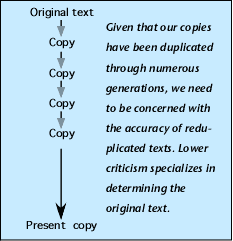 We do not possess the original Bible books, sometimes called texts or autographs. We do, however, have many thousands of Biblical manuscripts (5,500+) which are copies of the originals. It is best to think of our manuscripts as descendants of the originals. Each generation hand-copied their own. The originals became damaged or worn and were destroyed.
We do not possess the original Bible books, sometimes called texts or autographs. We do, however, have many thousands of Biblical manuscripts (5,500+) which are copies of the originals. It is best to think of our manuscripts as descendants of the originals. Each generation hand-copied their own. The originals became damaged or worn and were destroyed.
These manuscripts have their own family trees. The texts would be copied and then distributed to different centers so they could read them aloud to their own congregations. Each Christian center then would have its own family tree. Once a copy got to the center, then the whole document along with its mistakes would be repeated as scribes copied that document. The variances are minimal. Their own copy would resemble the original.
The goal in Lower Criticism is to find the original 'father' text, the autograph by comparing the different families of texts.
One person wrote asking,
I was however shocked to see that you too support the idea that the contents of the Bible should be determined by scientists who research the "most probable text" of the Bible in your article. Textual critique is an interesting subject, but cannot be applied to an infallible and holy book.
I replied something like below,
Textual criticism is not applied to the autographs, the originals, but upon the copies of the copies of the autographs. We in no way accept inferiority on the originals. We do, however, recognize as man copied them through the ages that there were minor changes (not making doctrinal differences for the most part), mostly consisting of spelling or copying mistakes.
For example, I have access to different versions of a Bible verse in Greek. I am not trying to question the original or think I have a better idea of what God should say (man does this far too often)! Our goal is to discover what God did say! Textual criticism is all about identifying the original and living by it.
The Old Testament Texts
The Old Testament faced an entirely different situation than the New Testament. They had one chief worship center.
The scribes would specialize in copying the scriptures when they were worn. The scribes were extraordinarily careful in copying these texts. They would count the letters going each way. If they found one mistake, they would destroy that page. They did make occasional mistakes like the reversing of letters, but they did not dare tamper with God's Word. They preserved the integrity of the holy texts by burning the old ones with defects.
What happened as a result was that our latest copies (manuscripts) of the Old Testament scriptures were more than one or two thousand years from the time that they were written in some cases. People started wondering whether they were true.
Until recently, our most ancient copies (manuscripts) of the Old Testament were from the 10th century. They could of course check its message with the Septuagint which was written several hundred years before Christ. This was the Greek translation of the Old Testament that was in use in Jesus' day.
More recent archaeological findings, however, have swept this suspicion into the Mediterranean. The discovery of the Dead Sea Scrolls in the 1940s have shown that the Hebrew (Masoretic) text was accurately preserved. These scrolls were written 100 to 200 years before Jesus' time. So passages that clearly describe Jesus such as Isaiah 53 could no longer be said to be inserted after Jesus' time.
The New Testament Texts
The New Testament manuscripts on the other hand are numerous. These 5,500 plus manuscripts date from the 2nd century. Those who ask whether the originals had ever existed can find their answer here. They certainly did. Only the genuine text could have spawned so many copies through the years.
Some people seem to question the authenticity of the orginals when there are so many different manuscripts with slight variations. This is a shame. The opposite is true. The agreement of the scriptures prove the existence of the original documents. The number of manuscripts for the New Testament scriptures is far greater than any other ancient text. It is through these variants (differences on words or spellings used), we can trace back and discover what the original text had said.
Do we find that the texts are reliable? Definitely.
Although one may hear of thousands of variants or errors, we must keep in mind that they count the same error in each of the 5,000 manuscripts. After careful examination, they have found that only 40 lines (400 words) of the 20,000 lines are in question. We can be sure that the New Testament is 99% pure. The Iliad by contrast has 5% corrupted text. There is no ancient text that is more reliable than the New Testament.
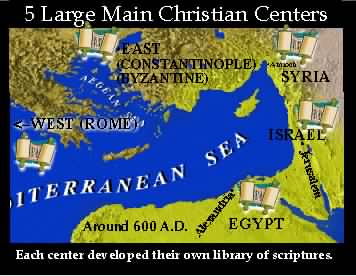 What is more helpful, is that we know exactly what the differences of the Greek text are. At the foot of each page of the Greek text, one can see the footnotes which document which variants that particular verse might have. They note which manuscripts support which variant. In this way Lower Criticism has dispelled fears of an unreliable text. One main advantage of studying Greek is to be able to read these footnotes! English translations mention only the most significant variants.
What is more helpful, is that we know exactly what the differences of the Greek text are. At the foot of each page of the Greek text, one can see the footnotes which document which variants that particular verse might have. They note which manuscripts support which variant. In this way Lower Criticism has dispelled fears of an unreliable text. One main advantage of studying Greek is to be able to read these footnotes! English translations mention only the most significant variants.
Why all the confusion?
Many people do not understand how the New Testament books were written, copied and distributed. It is not simply as we might think.
There was no instant New Testament Bible. Each New Testament book was written separately (except perhaps Luke and Acts) and sent to different people and places. These places had no faxes, computers or telephones. Paper was not yet popularized or available. Reading the scriptures was popular in churches. Copies were not easily made or preserved. The originals would be passed around from church to church.
And when this letter is read among you, have it also read in the church of the Laodiceans; and you, for your part read my letter that is coming from Laodicea." (Colossians 4:16)
As time went on, the 27 different documents (Bible books) would travel about and end up in different Christian churches or Christian centers. Each main Christian center would begin their own collection of these NT scriptures (ie. manuscripts) and make their own copies for those in their jurisdiction. Those who made these copies were scribes. Remember, writing was a special skill back in those days.
These centers then unconsciously would develop their own family of manuscripts through their copying efforts. There would be slight variations in these manuscripts, nothing significant. Remember, only 40 lines of 20,000 are in question. Alexandria in Egypt had the driest climate and most well-preserved scriptures. The Western texts were centered in Rome. Later on Byzantine became the empire's capital and a major center for Christianity. The picture above shows the five main Christian centers in 600 A.D.
In summary, we do not need to be concerned whether we are missing anything when we read our translations. The major differences such as whether there is a long ending on the Gospel of Mark, John 7:53-8:11 or 1 John 5:7 is usually footnoted in good translations. Nothing is of great importance in these sections that we cannot find elsewhere in the Bible.The main difference comes down to whether we actually love, trust and obey God's Word. We do not need to be scholars to do this. The more confidence we have in God's Word for our own lives, the more we can grow as Christians. Where seeds of doubt have been sowed in our hearts, we need to weed them out. Don't be afraid to search out the truth; only be afraid of believing falsehood! Satan seeks to create mistrust when there needs to be none.God speaks and expects us to listen! |
Knowing about God's Word and its reliability is one important matter, but one also needs to know how to meet God in the scriptures.
Knowing about God's Word and its reliability is one important matter, but one also needs to know how to meet God in the scriptures.
Other Articles on the Origin of the Bible Series |
|
1. How is the Bible different today from before? |
|
2. How did the Bible come into being? |
|
3. Why aren't other books part of the Bible? |
|
4. How is the Bible different from other books? |
|
5. Doesn't the Bible have a lot of mistakes? |
|
6. Is the Bible really relevant to my life? |
|
7. What Bible version should I use? I'm confused. |
|
8. Why do some people say that I must use the KJV? |
|
info@foundationsforfreedom.net
Scriptures typically quoted from the New American Standard Bible unless noted:
(C) Copyright The Lockman Foundation 1988
